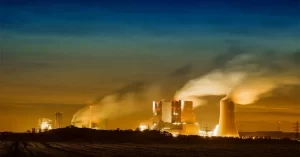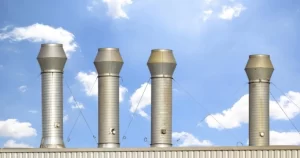Introduction
Air pollution models are designed to simulate the movement and distribution of pollutants such as suspended particulate matter (SPM), sulfur dioxide (SO2), nitrogen oxides (NOX), and carbon monoxide (CO) released into the atmosphere from sources like industrial combustion, domestic cooking, and vehicle emissions. These models are critical for regulatory purposes and urban planning, allowing for the assessment of impacts from both existing and new sources, predicting pollution events, evaluating control measures, and developing air quality monitoring programs.
Air pollution dispersion is analyzed on various scales:local, regional, national, and global. Locally, considerations include emissions, source characteristics, initial plume rise, early mixing phases, local terrain, and initial transport. At higher resolutions, local interactions involve sources within a 10-20 km range. Regional scales cover urban areas or large industrial complexes, representing them as point sources in the models.
Modeling the dispersion of air pollutants in the atmosphere is a complex scientific challenge. Both natural and human activities release various compounds into the atmosphere, which can significantly impact the environment and human health. Dispersion models help predict these effects.
Burning materials releases pollutants into the environment, making it essential to understand the concentrations and deposition rates of these pollutants around combustion facilities. Air dispersion models estimate air concentrations and deposition rates by simulating how physical processes in the atmosphere affect the spread of emissions from sources like industrial stacks.

What is the Dispersion Model?
A dispersion model explains the relationship between emissions, resulting concentrations, and depositions. It provides a detailed analysis of the sources of emissions and their contribution to pollutant concentrations. These models use analytical and numerical methods, typically implemented on computers.
Need for Dispersion Models
Dispersion models are necessary to:
1. Predict ambient air concentrations from emission sources.
2. Plan and implement cost-effective air pollution control programs.
3. Conduct environmental impact assessments.
4. Quantify the impact of process improvements.
5. Evaluate the effectiveness of emission control technologies.
6. Optimize stack height and diameter.
7. Plan for air pollution episodes.
Air Pollution Dispersion Modeling in India
In India, the establishment of new industries or expansion projects requires environmental clearance from the Ministry of Environment, Forest, and Climate Change (MoEF). The ability to predict and evaluate the environmental impacts of industrial operations is crucial for making informed decisions about industrial carrying capacity. Current methods for predicting ground-level concentrations (GLC) of pollutants are adopted from international literature and need to be adapted to Indian climatic conditions through extensive research and field observations. The MoEF has issued guidelines for conducting Environmental Impact Assessments (EIA), which include developing methodologies for air pollution dispersion modeling.

Types of Air Pollution Dispersion Modeling
Box Model
1. Simplest type.
2. Assumes a box-shaped air shed with homogeneously distributed pollutants.
Gaussian Model
1. Commonly used and one of the oldest types.
2. Assumes pollutants follow a normal distribution.
3. Suitable for continuous, buoyant pollutant plumes from ground-level or elevated sources.
Lagrangian Model
1. Calculates dispersion by tracking the movement of pollution parcels.
2. Uses a moving reference frame as parcels move from their source.
3. Based on fluid elements following instantaneous flow.
Eulerian Model
1. Chemical species move in a fixed grid.
2. Solves mass conservation equations numerically.
3. Complex but well-defined 3D formulation, useful for regional-scale problems.
Dense Gas Model
1. Simulates dispersion of dense gas plumes, heavier than air.
Importance of Air Pollution Dispersion Modeling
These models are crucial for:
Health Impacts: Assessing exposure levels and health risks from air pollution.
Industrial Regulation: Designing and enforcing emission limits for industries.
Climate Change Mitigation: Understanding the contribution of pollutants to global warming.
Challenges in Air Pollution Dispersion Modeling
Data Availability: Reliable data on emissions, meteorological conditions, and pollutant concentrations are essential.
Limited Monitoring Infrastructure: Sparse data points reduce model accuracy.
Resource Constraints: Developing and maintaining advanced models requires significant resources, including skilled personnel and computational power.
Conclusion
Air pollution dispersion modeling is vital for understanding, monitoring, and mitigating the effects of air pollution on health, the environment, and climate. These models simulate pollutant dispersion to provide insights into pollution patterns, identify emission sources, and evaluate regulatory measures. They are used to calculate downwind ambient concentrations from various sources and forecast future concentrations under different scenarios.
How to get started
If you would like to get air pollution dispersion modeling done, write to us at enquiry.meepl@gmail.com or contact us
